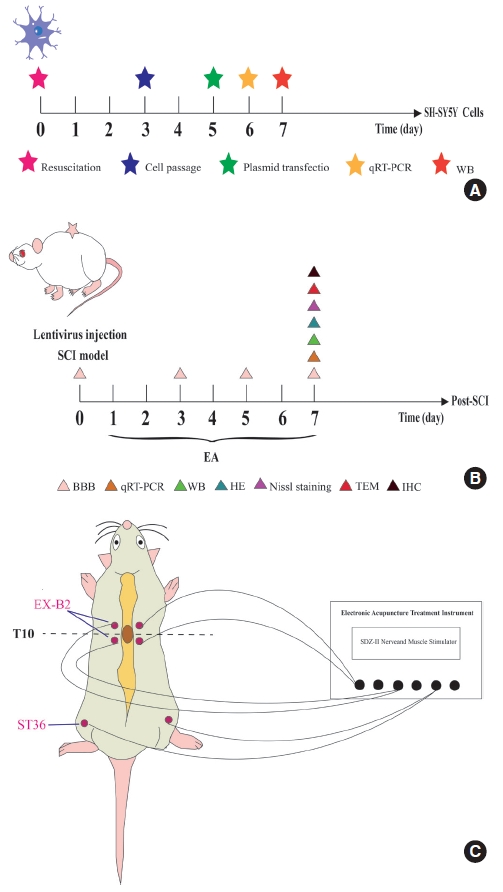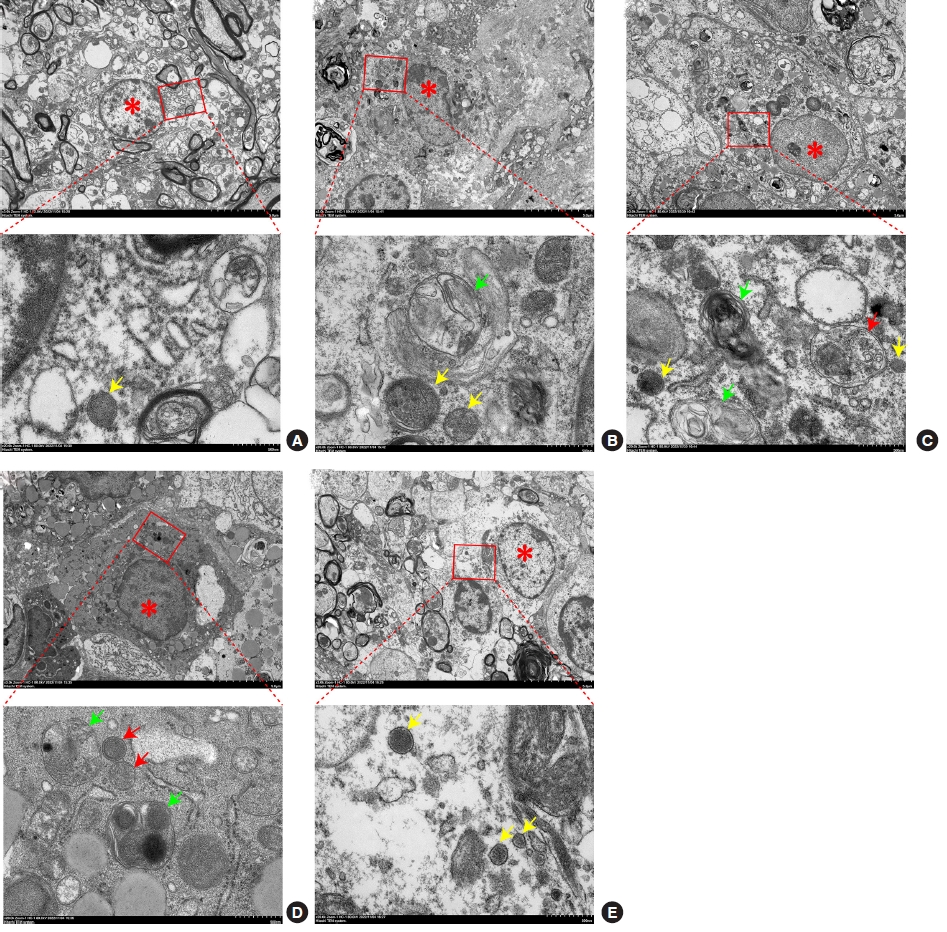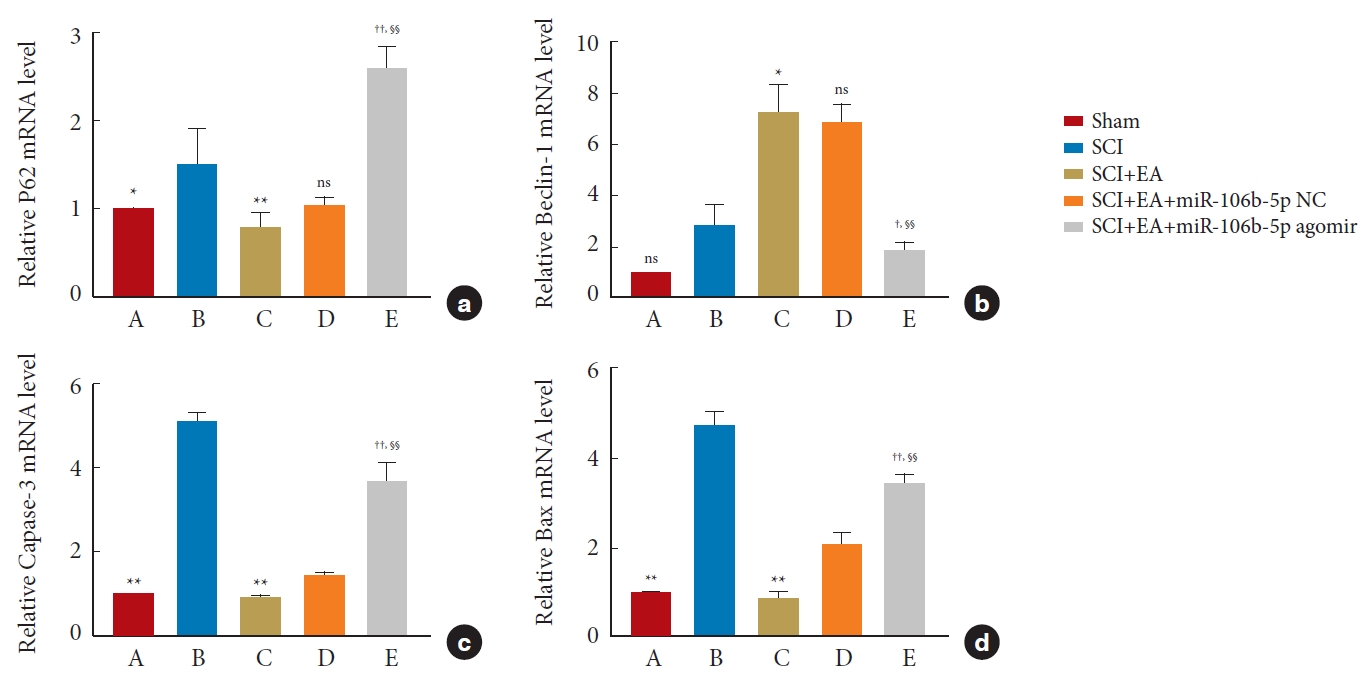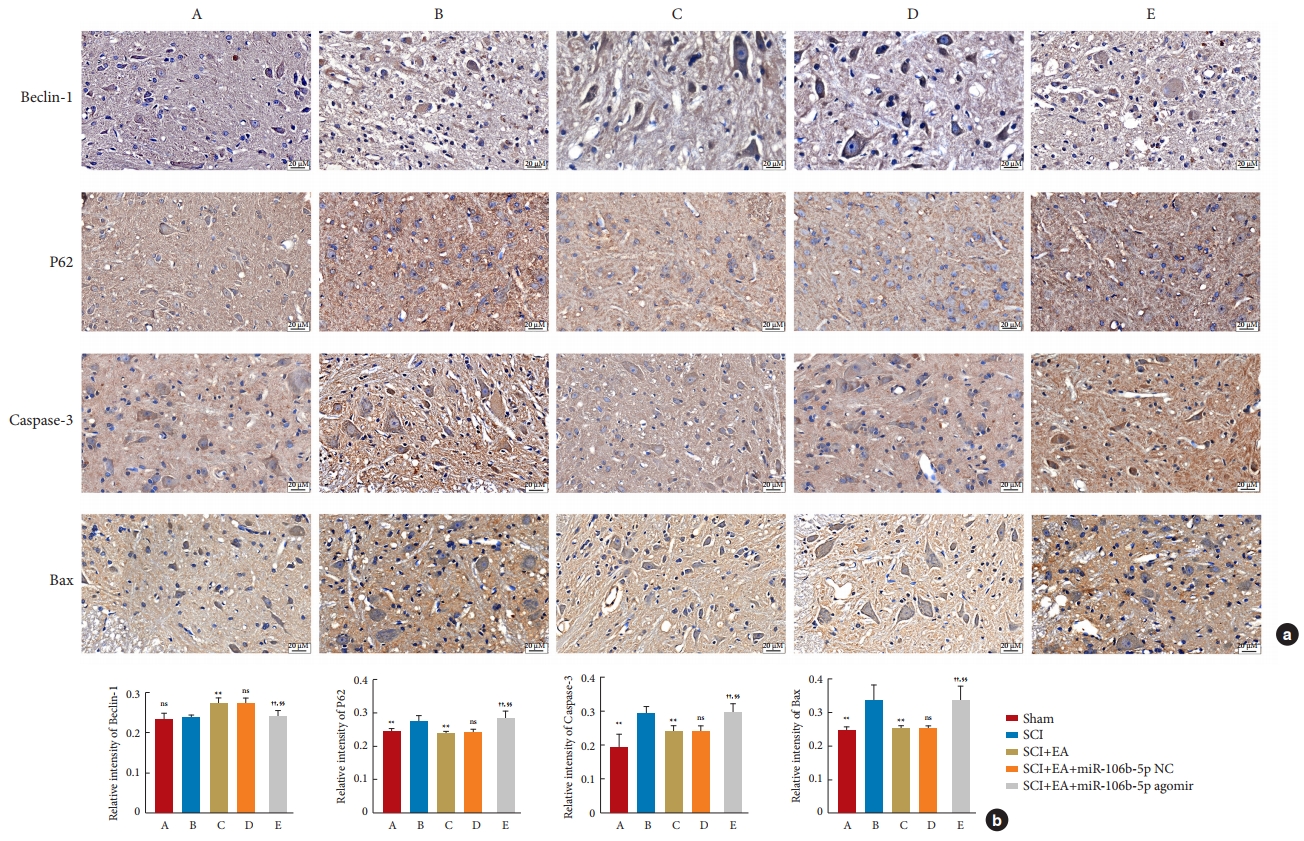 |
 |
- Search
| Neurospine > Volume 20(3); 2023 > Article |
|
|
Abstract
Objective
Methods
Results
Supplementary Materials
Supplementary Table 1.
Supplementary Table 2.
NOTES
Funding/Support
This study is supported by the National Natural Science Foundation of China (No. 81960417), Guangxi Key Research and Development Program (No. GuiKeAB20159027), Guangxi Natural Science Foundation (No. 2018GXNSFAA050033), and the Young Scientist Fund of the Natural Science Foundation of Guangxi (No. 2022GXNSFBA035545).
ACKNOWLEDGEMENTS
Fig. 1.

Fig. 2.

Fig. 3.

Fig. 4.

Fig. 5.

Fig. 6.

Fig. 7.

Fig. 8.

Fig. 9.

Table 1.
| Parameter | SCI patient | Healthy control | p-value |
|---|---|---|---|
| Sex, male:female | 7:3 | 7:3 | 1.00 |
| Age (yr) | 38.4 ± 13.95 | 36.2 ± 12.94 | 0.73 |
Table 2.
| Group (BBB score) | Before surgery |
After surgery |
|||
|---|---|---|---|---|---|
| 0 Day | Third day | Fifth day | Seventh day | ||
| Sham | 21.00 ± 0.00 | 21.00 ± 0.00 | 21.00 ± 0.00 | 21.00 ± 0.00 | 21.00 ± 0.00 |
| SCI | 21.00 ± 0.00 | 0.00 ± 0.00†† | 1.00 ± 0.00 | 2.00 ± 0.58 | 2.50 ± 0.76 |
| SCI+EA | 21.00 ± 0.00 | 0.00 ± 0.00†† | 1.67 ± 0.75 | 3.00 ± 0.58**,§§ | 5.00 ± 0.58**,§§ |
| SCI+EA+miR-106b-5p NC | 21.00 ± 0.00 | 0.00 ± 0.00†† | 1.67 ± 0.75 | 3.00 ± 0.58§§ | 5.17 ± 0.69§§ |
| SCI+EA+miR-106b-5p agomir | 21.00 ± 0.00 | 0.00 ± 0.00†† | 1.00 ± 0.58 | 1.83 ± 0.69 | 2.67 ± 0.75 |
Values are presented as mean±standard deviation of 6 rats per group per time point, where lower BBB scores indicate poorer locomotor function.
BBB, Basso-Beattie-Bresnahan locomotor scale; SCI, spinal cord injury; EA, electroacupuncture; NC, negative control.
One-way analysis of variance followed by least significant difference or Dunnett T3 post hoc test (where equal variances were not assumed) was applied for multiple comparisons.
REFERENCES

- TOOLS
- Related articles in NS
-
Journal Impact Factor 3.2



























